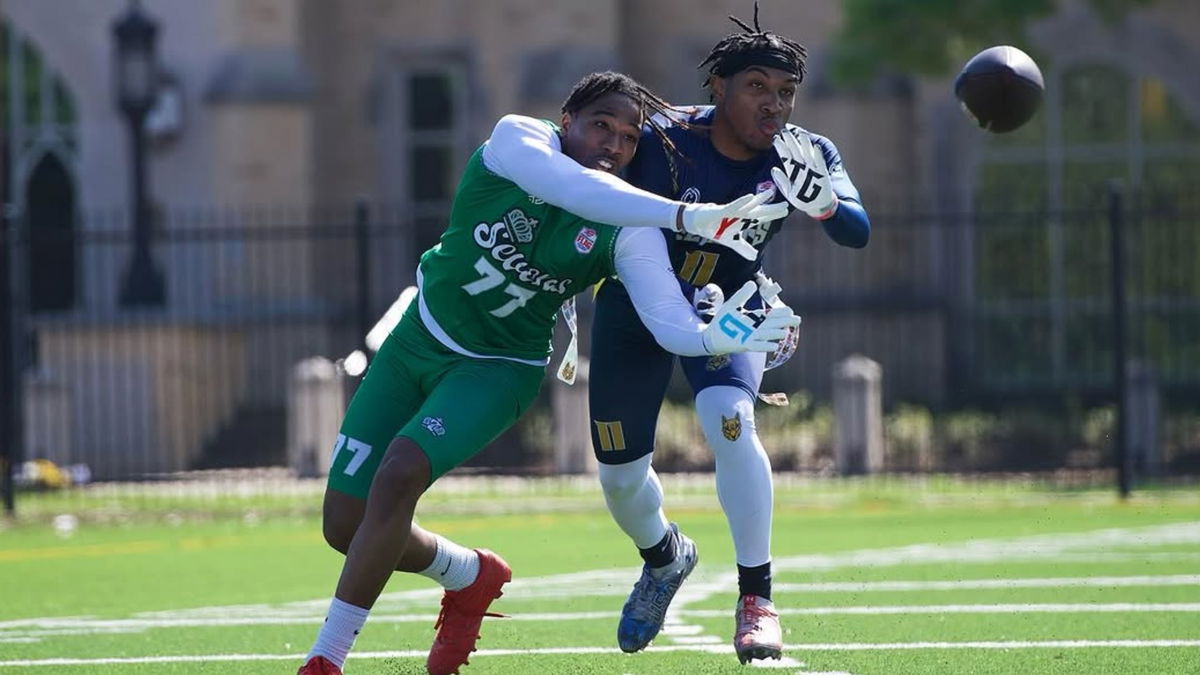
Imago
U.S. Flag Football – Dallas Ocelots vs Las Vegas Lucky 7s (Image Credit: Instagram/@flagfootball)

Imago
U.S. Flag Football – Dallas Ocelots vs Las Vegas Lucky 7s (Image Credit: Instagram/@flagfootball)
From community centers to professional arenas, Pickleball earned the label of “fastest-growing” and pulled nearly 20 million Americans into its fold by 2024. And as its expansion has steadied, another contender has emerged to capture America’s attention. Flag football, once a recreational pastime for soldiers during World War II, has developed into a serious athletic pursuit, now carrying the weight of Olympic recognition. Know about the sport?
Watch What’s Trending Now!
For years, pickleball embodied the phenomenon of modern American sport. Its numbers surged by more than 300 percent in three seasons, courts multiplied to nearly 70,000 nationwide, and the average participant grew younger with each report. The energy behind its rise demonstrated how swiftly an activity could gain permanence in a competitive sporting culture. But the baton of “next big sport” is now being passed, and the country’s focus is shifting.
That shift has arrived in the form of flag football. In October 2023, the International Olympic Committee approved its inclusion in the Los Angeles 2028 Summer Games. This marked a profound turning point, for the sport that began as “touch and tail football” in the 1940s will now be contested on the world’s most prominent athletic stage. The appeal is twofold.
ADVERTISEMENT
Flag football preserves the strategic and athletic dimensions of American football while eliminating the collisions that define the tackle game. Its rules make it accessible, fast, and competitive, and its connection with the NFL has given it credibility and reach.
After pickleball’s boom, is flag football the next American sport destined for Olympic glory?
The format is simple.
ADVERTISEMENT
Five players per side line up on a field measuring 70 by 25 yards, including two 10-yard end zones. Play begins with the ball snapped to a quarterback, who can pass or hand off to advance toward the opposition’s goal. Tackling is replaced by removing one of two flags fastened to the ball carrier’s waist. Teams have four downs to reach midfield and another four to score, while turnovers occur through interceptions or fumbles. A touchdown counts for six points, with options for one or two-point conversions. Games consist of two 20-minute halves, with stoppages only in the final two minutes.
The balance between offense and defense, combined with the absence of high-impact collisions, has made the sport popular among both genders and all ages.
ADVERTISEMENT
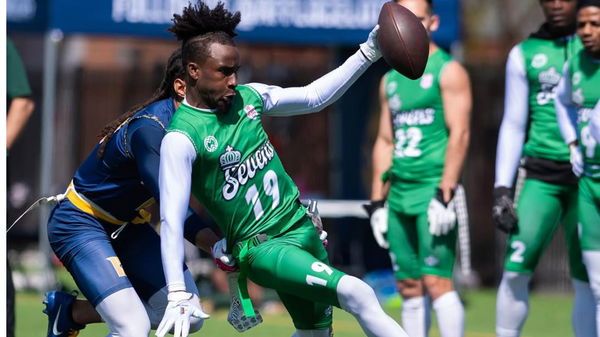
Imago
U.S. Flag Football – Dallas Ocelots vs Las Vegas Lucky 7s (Image Credit: Instagram/@flagfootball)
And the path to Olympic recognition had always been dictated by structure, compliance, and global reach. In this respect, pickleball faltered where flag football succeeded.
Top Stories
Lee Trevino, 86, Leaves Golf World Hanging on Every Word at PNC: ‘I’ve Been Digging Worms’
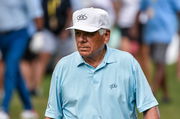
Blue Jays Confirmed to Land MLB’s “Big Fish” After Mark Shapiro Fires Bold Message to Clubhouse, per Insider

Kansas City Mayor Sends Strong Message to Clark Hunt After Chiefs Confirm Arrowhead Exit
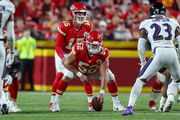
Chiefs Announce Relocation From Missouri to Kansas to Build New Stadium
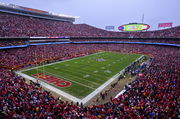
Paige Spiranac Shares Her Mom’s Honest Views on Controversial Career Decisions

LIV Golf Issues Statement as Pro Announces Shock Retirement After Getting Relegated

The International Olympic Committee required one unified governing body for each sport, yet pickleball presented three competing federations. As one of its own leaders, Seymour Rifkin, acknowledged, “Our biggest challenge is the pickleball community.” Without a merger, the sport could not even advance to the starting line of Olympic consideration, no matter how quickly its popularity spread.
ADVERTISEMENT
Flag football, by contrast, presented a united and persuasive case. With the International Federation of American Football already in place, the NFL lent weight to its campaign and emphasized the sport’s non-contact nature, inclusivity, and expanding international participation. The IOC’s criteria were satisfied: Broad geographic practice, adherence to anti-doping standards, and demonstrable appeal. By the time Los Angeles was confirmed as host of the 2028 Games, flag football’s Olympic debut had been secured, while pickleball remained ineligible, hindered not by lack of enthusiasm but by the absence of a single coherent voice to represent it on the world stage.
That popularity gets more evident in American schools.
According to the National Federation of High Schools, participation in girls’ flag football increased by more than 25,000 athletes from 2023–24 to 2024–25. The number of schools offering the sport nearly doubled, rising from 1,777 to 2,736. In California alone, 19,921 girls played last year, accounting for nearly 30 percent of all female participants nationwide. California Interscholastic Federation executive director Ron Nocetti admitted the scale had surpassed expectations. “I don’t think anyone assumed it would grow this quickly.”
ADVERTISEMENT
The growth has not been isolated.
The Central Coast Section staged its first championship in 2024, with Alameda High School claiming the inaugural crown. Head coach Michael Lee noted the caliber of athletes crossing over. “When we first started, I will say that we were a little bit blessed. We had some all-league softball players, soccer players and all of the basketball players come out.” His school has since added middle school and spring leagues, while demand for youth flag football has spurred travel teams and new competitions.
Professional influence has been pivotal. NFL Flag now oversees more than 1,800 youth leagues, and all 32 NFL franchises have committed to supporting the game at the grassroots level. Commercial visibility has also grown, too.
ADVERTISEMENT
A national championship aired on ESPN drew an average of 766,000 viewers, a remarkable audience for high school sports. Former players have personally invested in its expansion. Steve Young coached at his daughters’ school in Atherton, Drew Brees co-founded Football ‘N’ America across eight states, and Matt Leinart’s programs in Southern California now enroll more than 8,000 girls, compared with just a few hundred five years ago.
The connection between domestic growth and Olympic inclusion is clear. With Los Angeles hosting the 2028 Games, the presence of flag football ensures a distinctly American contribution to the program. Yet the IOC emphasized global participation as well.
The International Federation of American Football governs the sport worldwide, and both men’s and women’s tournaments will be held. NFL, recognizing the platform, has already committed to making its players eligible. This decision, approved unanimously by team owners, opens the door for professionals to represent their nations, blurring the line between youth development and elite spectacle.
ADVERTISEMENT
The trajectory of flag football mirrors the early rise of pickleball, but the stakes are higher.
Pickleball thrived on community access and affordability. Flag football thrives on professional investment and the allure of Olympic prestige. Yet, both demonstrate how rapidly American sporting preferences can shift, given the right mixture of accessibility, infrastructure, and institutional backing. As Tom Cove, president and CEO of the Sports & Fitness Industry Association, remarked on pickleball, “You will find the pickleball craze is alive and well, still the fastest-growing sport in the United States.” But even as pickleball holds that title, flag football may soon rival its impact.
From Fort Meade in the 1940s to the Olympic Stadium in 2028, flag football has traversed a remarkable journey. Its rules preserve the essence of America’s most popular game while offering a new, inclusive form for a broader audience. With professional stars coaching, youth leagues multiplying, and schools embracing it at a record pace, the sport’s ascent now carries international significance. If pickleball proved how swiftly a new sport can become entrenched, flag football demonstrates how one can be transformed into a global showcase.
ADVERTISEMENT
And now, Flag football’s arrival at the 2028 Los Angeles Olympics set the stage for a potential dream American team built around NFL stars eager to compete on the world stage.
NFL stars fuel vision of a dream American flag football team for LA28 Olympics
Flag football entered the Los Angeles 2028 Olympic programme through a decisive push that aligned professional ambition with international aspiration. The International Federation of American Football worked in partnership with the NFL under the banner of “Vision28,” presenting the sport as both accessible and globally resonant. Their case succeeded in October 2023, when the International Olympic Committee voted to approve its inclusion alongside squash, cricket, baseball-softball, and lacrosse.
Roger Goodell, speaking on behalf of the league, affirmed the magnitude of the moment. “It’s an incredible honor for any athlete to represent their country in the Olympics, which is the pinnacle of global sport.”
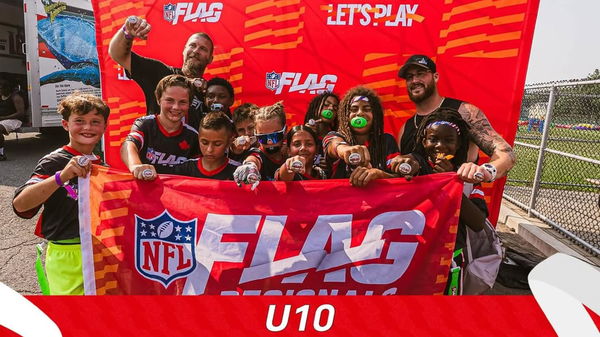
Imago
U.S. Flag Football -Montréal Regional NFL Flag Champions (Image Credits: Instagram/@nflflag)
The approval immediately set the stage for speculation about which players might wear national jerseys in Los Angeles.
NFL owners unanimously cleared the way for professionals to participate, opening the door for household names. Tyreek Hill, Justin Jefferson, Joe Burrow, and Kyler Murray were among those who publicly considered the possibility, each offering a different narrative of heritage or opportunity. Kyle Hamilton, whose mother is Korean and who was born in Greece, added a layer of international intrigue. Running backs Aaron Jones and Chuba Hubbard also joined the conversation, the latter representing Canada by birthright.
Women’s competition carried equal weight in the planning.
The United States women’s national team had already established dominance by winning three consecutive IFAF World Championships, a foundation that matched the NFL’s strategic aim of connecting with its large female audience.
The outlines of a potential American roster, therefore, became a subject of fascination. Jalen Hurts lent his presence to a promotional campaign with the NFL and IFAF, closing with the declaration, “It’s our turn.” Jefferson, in his role as a global flag ambassador, addressed league owners before their decisive vote, embodying the dual responsibilities of competitor and advocate. Taken together, these signals suggested that the composition of a dream American team would blend proven NFL stars with the symbolic momentum of a sport entering the Olympic stage for the first time.
How excited are you to watch the game on the biggest stage of sports? We are!
ADVERTISEMENT
ADVERTISEMENT
ADVERTISEMENT

